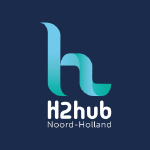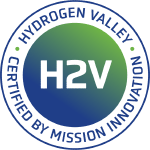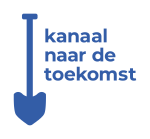

Inhoud
Sustainability industry
The industry, network operators, business associations and governments in the North Sea Canal Area have a common ambition: an almost completely CO2 neutral and circular economy by 2050.
The Netherlands has set the goal of emitting 55% less CO2 in 2030 than we did in 1990. By 2050, industry must be virtually emission-free. These agreements are laid down in various national, European and international treaties. Industry is switching from fossil energy to energy from renewable sources. Making industry sustainable requires major changes in the energy system. The change in the energy system is a complex puzzle and requires major adjustments to the energy infrastructure. The development of the new energy system means that our environment is going to change. More offshore wind turbines, transformation stations, power lines in the ground, the arrival of electrolysers producing hydrogen and heat networks for industry or the built environment. The companies, industry and network companies in the NZKG have big steps to take. That is not always easy, especially in an area where so many tasks and challenges come together as the NZKG. The energy system of the future requires a lot of space in the area. To determine where these projects land in the region, the Energy Transition Program NZKG is a building block in the NOVEX approach NZKG.
NZKG Energy Transition Programme
The North Sea Canal Area Energy Transition Program is a public-private partnership that drives and accelerates initiatives around making industry and energy transition more sustainable in the area. The program keeps an overview of the progress and cohesion of the sustainability of industry and energy infrastructure projects in the NKZG. Any bottlenecks are identified and where possible resolved by engaging with the parties. The partnership brings supply and demand together, discusses programming, investment decisions and integration issues related to energy infrastructure, and works on preconditions.
The NZKG Energy Transition Programme works for and with industry, governments and grid operators in the North Sea Canal area. The program is deployed with the aim of accelerating and realizing concrete projects. We do this by working with parties to program in a timely manner, to work on necessary preconditions and to tackle bottlenecks in a timely manner. The sustainability of the industry and implementation of the CES NZKG has as its starting point the four energy carriers of the future:
- Hydrogen
- Electricity
- Heat/steam
- Carbon storage/capture

The image above depicts the future energy carriers in the NZKG. Click on the image for a larger view.
National Manufacturing Sustainability Program
The National Manufacturing Sustainability Program (NPVI) was set up within the Ministry of Economic Affairs and Climate (EZK), Ministry of Climate and Energy and the Ministry of Infrastructure and Water Management to achieve more direction and coherence between initiatives in the area of making industry in the Netherlands more sustainable. Intensified cooperation between public and private parties is essential to achieve sustainability in industry. The NPVI shapes that public-private cooperation to a large extent in the six industry clusters that the Netherlands has. Each industry cluster has a cluster director. They steer the progress of projects and the resolution of bottlenecks, for example, between companies, governments and grid managers around investments in energy infrastructure. For the North Sea Canal area, Ingrid Post is the cluster director.
Sustainable energy carriers and Sustainable counter
In four Sustainable energy carriers, stakeholders of the energy carriers (hydrogen, electricity, heat/steam and carbon) in terms of supply and demand come together to discuss concrete projects and put bottlenecks on the agenda. The IJmond, Zaanstreek and Westpoort regions have created a “regional roadmap. The roadmap contains per region a deepening of the transition paths of companies and peripheral conditional projects at sub-regional level.
-
The electricity grid of the future will look very different from today’s grid. Electricity today is still generated centrally in power plants using coal or gas to generate electricity. The electricity grid of the future will be more diverse, centralized but also partly more decentralized and generate electricity green. This means that generation takes place locally and in different places. In this, electricity is generated from renewable sources such as solar and wind. The CES NZKG shows that the demand for electricity from industry will increase strongly towards 2030 and 2050. The Acceleration Table Electrification focuses on timely realization of the necessary expansion and reinforcement of the electricity grid and smarter use of the grid.
 Overview of the electricity projects in the North Sea Canal area.
Overview of the electricity projects in the North Sea Canal area.The Acceleration Table Electrification is led by the provincie Noord-Holland and consists of:
Alliander
TenneT
Port of Amsterdam
ODIJ
Tata Steel
ORAM
Gemeente Amsterdam
Gemeente Zaanstad
Gemeente Beverwijk
Gemeente Haarlemmermeer
Gemeente VelsenLearn more about the projects from the Sustainable energy carrier in the Position Paper Elektrificatie. This outlines what will change in the electricity infrastructure to meet future demand.
-
In addition to sustainably generated energy and heat, green hydrogen is an important energy carrier for the future. Hydrogen is made with renewable electricity (such as wind or solar power). The electric current converts water into hydrogen and oxygen. The process in which electric current is converted to hydrogen and oxygen is called electrolysis. Hydrogen can be used as a raw material for industrial processes that require high temperatures. For example, for steel and chemistry. It can also serve as fuel for aviation, shipping and heavy transport.Because of the location of the NZKG, hydrogen is an interesting replacement for the use of fossil fuels in this region. Several projects are working on the construction of the hydrogen network (both high and low pressure), electrolysis, as well as on the import of hydrogen and adapting production processes in industry so that hydrogen can be used. For example, on the development of the Direct Reduced Iron plant at Tata Steel.

Click here for information about the flagship and other projects in the North Sea Canal Region
- Hydrogen development in North Holland has been awarded the important status of Hydrogen Valley in 2023. The Hydrogen Valley is a European recognition for regions that are making distinctive efforts to develop a hydrogen-based energy system. As a Hydrogen Valley region, projects from North Holland can qualify for European funding and share knowledge with other Hydrogen Valleys.
- More inforamtie about the development of hydrogen projects in the Position Paper Hydrogen Hub Amsterdam/NZKG.
- The Hydrogen Acceleration Table is spearheaded by the Port of Amsterdam and consists of:
Tata Steel
Gasunie
Vattenfall
Schiphol
City of Amsterdam
Province of North-Holland
Alliander
Argent Energy
HyCC
EVOS
Municipality of Velsen
ORAM
MRA
The University of Amsterdam
Delft University of Technology (Read more about the Knowledge Learning and Innovation Region NZKG here).
-
In the Sustainable energy carrier Heat/Steam an inventory is being made of opportunities in the region in the field of heat. Where can released heat from industry be reused and which parties can cooperate? It will also look at how knowledge sharing and monitoring the progress of projects in the area can add value.
- Together with partners in the heat transition, the Position Paper Warmte/Stoom identifies which developments are influencing the demand and supply of heat in the NZKG, which preconditions exist and what the direct and indirect effects of the developments are.
- The Heat/Steam Acceleration Table is headed bygemeente Zaanstad and consists of:
Tata Steel
Port of Amsterdam
Vattenfall
HVC
AEB
City of Amsterdam
-
The NZKG has the task of becoming CO2 neutral by 2050. To reduce CO2 emissions, the North Sea Canal Area is investigating the possibilities around the storage, use and capture of CO2.
Information about the initiatives around carbon storage can be found in the Position Paper Carbon NZKG.
More information about carbon capture, storage and utilisation can be found in the following reports:
Sustainable counter
Companies, business clusters or other parties that encounter barriers or bottlenecks can use the Acceleration Counter. The Acceleration Counter is there to resolve bottlenecks and accelerate sustainability opportunities. The program office does this by discussing a case, identifying all aspects of the demand and associated barriers, and then bringing the necessary parties together. Would you like to make use of the Acceleration Counter? Then contact us at info@noordzeekanaalgebied.nl. See also previous case studies.
Cluster Energy Strategy NZKG
Every industrial cluster in the Netherlands has drafted a Cluster Energy Strategy (CES). The CES forms the input for the Multi-annual Programme Infrastructure Energy and Climate (Meerjarenprogramma Infrastructuur Energie en Klimaat, ‘MIEK’) published by the Ministry of Economic Affairs and Climate.
With the MIEK, the government is directing the acceleration of energy infrastructure projects of national importance. MIEK projects are those that serve more than one region. The projects can be urgent and complex in implementation and play an important role in reducing CO2.
The CES NZKG is updated periodically to adjust based on the latest developments. It contains the transition paths of companies and the planning of the required energy infrastructure. Companies, grid operators and government work together to facilitate the right energy infrastructure and align planning.
The most recent CES NZKG was published in September 2022. An important precondition for achieving CO2 reduction is timely availability of energy infrastructure. The CES is an important tool in this regard. In 2024, the CES NZKG 2024 will be presented to the Ministry of Economic Affairs.
Knowledge learning and innovation region NZKG
The energy transition requires innovative solutions, sufficient skilled technical personnel and training offerings linked to the energy system of the future. In the North Sea Canal Area, industry, SMEs, governments and knowledge institutions have united to accelerate the energy transition. The human capital agenda plays a central role in this. The region has several renowned knowledge institutions with a wide range of MBO, HBO and WO training programs. However, the changeable nature of the energy transition demands a lot from the knowledge institutions. Flexibility is of great importance for the knowledge institutions to be able to respond quickly to the trends in the energy transition and to offer up-to-date and high-quality educational programs.
Want to learn more about initiatives in the North Sea Canal area? Click here.
North Sea Canal Area Talent Development Program
The North Sea Canal Area Talent Development Program focuses on the further development of the educational infrastructure and learning communities in the region. Within the program work is being done on joint enrichment of the educational offering, curricula and applied and fundamental knowledge development. In this, innovative learning methods such as apprenticeships, traineeships and, Challenge-based learning are used.
Talent programs
The North Sea Canal area, with Techport in IJmond, Nova College, Techlands in Zaanstreek, ROC Amsterdam, Hogeschool van Amsterdam, InHolland Hogelschool, the universities UvA and VU, research institutes TNO, AMCEL and AMOLF and living labs such as Prodock, Energy Transition Campus Amsterdam (ETCA) and Techport Innovation Centre, has successful programs in the field of energy transition. These programs are eager to connect with regional companies, SMEs and governments to benefit from mutual synergy and improve the quality and supply of training. Examples include intensive knowledge transfer, industry experts in front of the class, jointly mapping the profiles of the future, putting together training modules.
Innovations
The Innovation Program works to provide the right facilities and conditions to guide innovation in the development and scaling up process in the area. The focus is on strengthening the existing innovation infrastructure and creating the various preconditions:
- Space for innovation,
- Financial resources and grant programs,
- Laws, regulations and permits,
- Network, matching and events,
- Attracting innovation (positioning and branding),
- Strengthen NZKG energy transition network.
The North Sea Canal Area and the Amsterdam Metropolitan Area strive to grow into a region with a vibrant and attractive innovation culture, where technological innovation is visible and where talent and innovations are developed.





